How to make simple building animations in strategic games
In many types of games, not only strategic, you have a piece of land, and you need to build something on it. Familiar circuit, isn't it?

As soon as you drag the building from the “store” onto the plot, it is being built for a while. Usually at this time there is visible one picture, similar to the construction site. To save memory and budget, in many games three such “building sites” have been drawn, for different buildings: small, medium and large. As soon as construction is completed, the construction site becomes a finished building.
')
But what if you want more subtle animations to make it visible as the building gradually grows towards the sky?
Now most axonometric [1] buildings are images rendered from 3D. If, for example, we need 5 frames of animation, then we need to simulate five stages of readiness, and then render. Yes, this way is expensive.
Our company has made about 40 such five-frame animations for the client. We did it easier by spending a few days on everything. The costs are quite small and the quality does not suffer. Let's see how we did it.
First you need to do in 3D a lot of different building materials - the most different, which you can think of. Walls, columns, beams, slabs - as in this picture.

These building materials must be rendered in a 2D image. Needless to say: they need to be rendered with the same camera angle and lighting as the finished buildings.
Everything should be in duplicate - along the axes of our axonometric map.
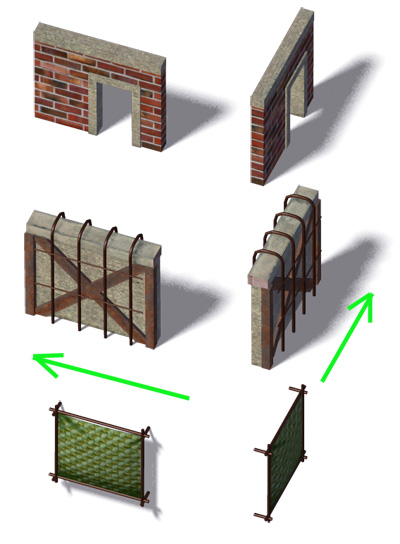
And now we will collect all building materials in one big PSD, on a subject on a layer.
Suppose we need to build a small hotel. To begin, we render the hotel in the usual way.
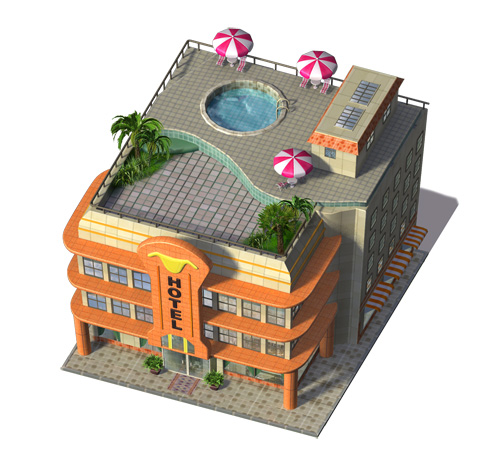
Further work is carried out in Photoshop. We need animation for 5 frames. So, on each frame we erase part of the building in accordance with the degree of readiness.
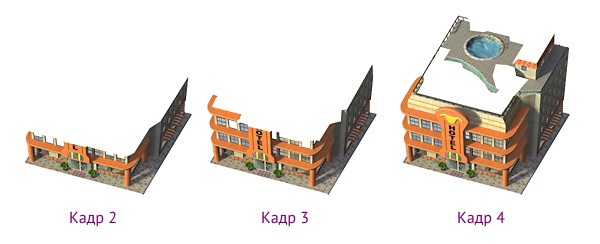
What we erased is filled with building materials obtained in the first step.
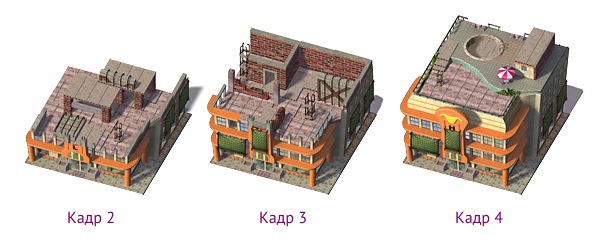
Arrange the building materials in accordance with the device of the building to look believable. For example, if a cinema is being built, a large hall must be made in the middle.

The first frame is just a plan on earth. The latter is the actual building. Done!
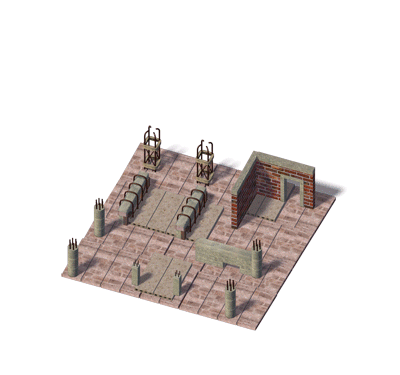
This solution can be adapted to buildings of any shape, not only rectangular. It is only necessary to bend a little building materials.
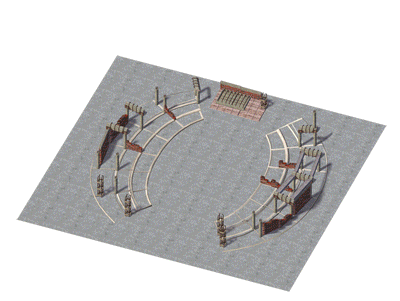
I know it turned out a bit cartoonish, but it's for games, right?
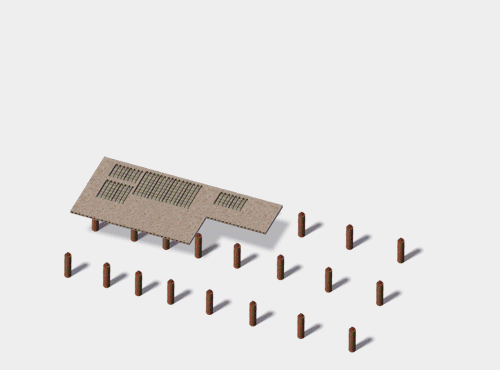
[1] The original is "isometric." But we do not see isometry, but something else - therefore I am writing “axonometry”.

As soon as you drag the building from the “store” onto the plot, it is being built for a while. Usually at this time there is visible one picture, similar to the construction site. To save memory and budget, in many games three such “building sites” have been drawn, for different buildings: small, medium and large. As soon as construction is completed, the construction site becomes a finished building.
')
But what if you want more subtle animations to make it visible as the building gradually grows towards the sky?
Now most axonometric [1] buildings are images rendered from 3D. If, for example, we need 5 frames of animation, then we need to simulate five stages of readiness, and then render. Yes, this way is expensive.
Our company has made about 40 such five-frame animations for the client. We did it easier by spending a few days on everything. The costs are quite small and the quality does not suffer. Let's see how we did it.
Step one. We make building materials.
First you need to do in 3D a lot of different building materials - the most different, which you can think of. Walls, columns, beams, slabs - as in this picture.

These building materials must be rendered in a 2D image. Needless to say: they need to be rendered with the same camera angle and lighting as the finished buildings.
Everything should be in duplicate - along the axes of our axonometric map.

And now we will collect all building materials in one big PSD, on a subject on a layer.
Step two. Making the animation.
Suppose we need to build a small hotel. To begin, we render the hotel in the usual way.

Further work is carried out in Photoshop. We need animation for 5 frames. So, on each frame we erase part of the building in accordance with the degree of readiness.

What we erased is filled with building materials obtained in the first step.

Arrange the building materials in accordance with the device of the building to look believable. For example, if a cinema is being built, a large hall must be made in the middle.

The first frame is just a plan on earth. The latter is the actual building. Done!

This solution can be adapted to buildings of any shape, not only rectangular. It is only necessary to bend a little building materials.

I know it turned out a bit cartoonish, but it's for games, right?

[1] The original is "isometric." But we do not see isometry, but something else - therefore I am writing “axonometry”.
Source: https://habr.com/ru/post/248705/
All Articles